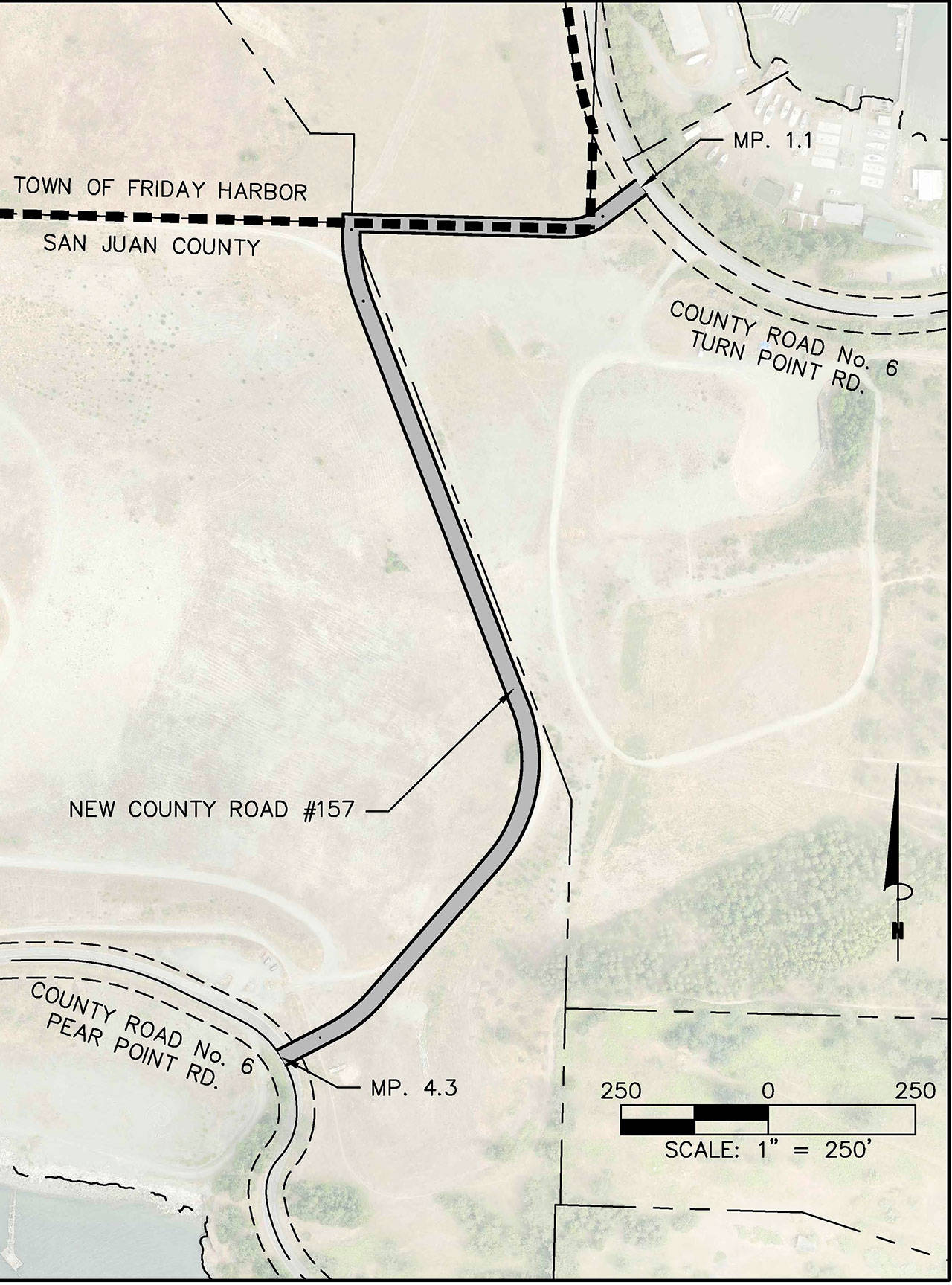After nearly 20 years, plans to build the elusive connector road are set.
“As usual there’s more work to be done than money to get it all done with so it’s finally worked it’s way to the head of the queue and is scheduled to be done this year,” said Councilman Bill Watson to the Journal.
A resolution to start construction of a connector road from Pear Point Road, across the gravel pit, to Turn Point Road was unanimously passed at the April 18 council meeting.
The resolution will allow San Juan County Engineer Colin Huntemer to develop plans and purchase materials for the project, for which the county’s latest six-year Transportation Improvement Plan budgeted $380,000. The county adopts this plan every year, but the project was knocked from the 2012-16 plan due to financial restraints and was not re-added until 2017-22 plan, established last year.
No one on the current county council or Huntemer was present for the project’s conceptualization, which often leaves details vague.
“There’s some alleged agreement between the town and the county that no one can really put their finger on,” said Pear Point Road resident Gib Black at the April 18 meeting. “Does it really exist? No one seems to know.”
According to Journal articles, a southeast section of the town, known as the Buck property, was annexed from the county to the town in 2009 to build homes. Since the state requires housing to be built in already dense areas, new developments would not be permitted in the county. This is part of the Growth Management Act, which regulates how the county will manage growth in its comprehensive plan.
According to Councilman Bill Watson, the connector road will divert traffic from Warbass Way and Harrison Street and provide access to a private housing development for market-rate homes and an affordable housing development through the San Juan County Home Trust.
“This is great for the Home Trust,” said its executive director Nancy DeVaux to the Jounal about the construction approval. “Ever since the annexation in 2009, we’ve been waiting for this.”
DeVaux said the next phase of its affordable housing development can’t begin without the road. Currently, 26 homes have been built out of the possible 100.
Watson explained at council that the town requested the connector road be built before all developments were constructed so the average 10 fuel trucks a week, coming off the barge at Shipyard Cove Marina, could be diverted off the residential road of Warbass Way.
Black cited a 2010 county study that stated the connector road would only divert 35 percent of traffic off Warbass. Grover Street was the best place for additional development, quoted Black from the report, because of the already installed sidewalks and lower cost of construction.
He added that the project’s 1998 Environmental Impact Statement draft was never completed and Huntemer’s own report on the project did not adequately explain why the road was necessary, other than there had been discussions of building it since the 90s.
“This road is not necessary, read your own studies, look at your own record,” said Black to council.
Four others, who live on Pear Point Road, complained about safety issues at the meeting, including the lack of sidewalks on Pear Point Road, which already has speeding vehicles and heavy foot traffic from pedestrians heading to Jackson Beach.
Black said the south terminus of the proposed road has an inadequate sight line, as reported by the study. Huntemer reiterated this at the April 18 meeting.
“I think that it’s true that the adequate sight distance isn’t obtained,” said Huntemer. “I don’t know of an alternative location…to improve the sight distance that’s practical.”
At the meeting, Watson said he would like to add a Pear Point shoulder-widening project to the Transportation Improvement Plan, but it probably won’t be completed this year. He added that questions about developing Grover Street should be directed to the town.
If the road must be built, a Turn Point roundabout should be installed first, wrote Black in an email to the Journal. This would divert fuel trucks without “adding a dangerous intersection.” Huntemer’s report stated that a mini-roundabout would be included in future designs for the 2,160-foot connector road.
At the meeting, Black explained that, although he doesn’t approve of the connector road, he supports town and county growth.
“I am a housing developer. I’m all in favor of seeing [Urban Growth Areas] built out, I am all in favor of providing low-income housing, but this road doesn’t solve those problems.”
The GMA defines Urban Growth Areas as regions with population counts similar to towns but aren’t actually incorporated, like Eastsound and Lopez Village.
Construction for the project is slated to begin this fall and will be paid for by the county roads fund. It will be called “Connector Road” unless a petition or county council requests otherwise.



